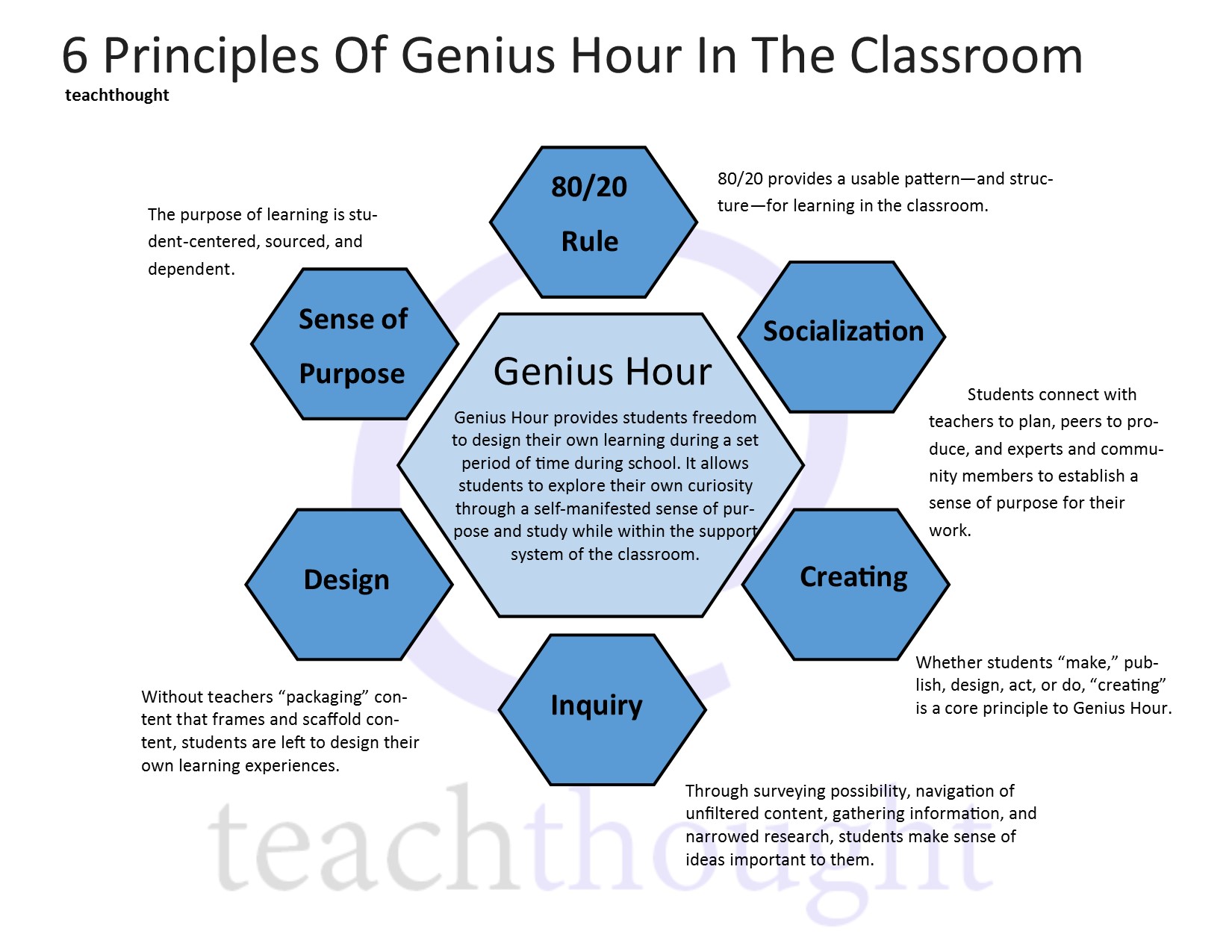
6 Principles Of Genius Hour In The Classroom
by Terry Heick
Genius Hour in the classroom is an approach to learning built around student curiosity, self-directed learning, and passion-based work.
In traditional learning, teachers map out academic standards, and plan units and lessons based around those standards. In Genius Hour, students are in control, choosing what they study, how they study it, and what they do, produce, or create as a result. As a learning model, it promotes inquiry, research, creativity, and self-directed learning.
Genius Hour is most notably associated with Google, where employees are able to spend up to 20% of their time working on projects they’re interested in and passionate about. The study and work are motivated intrinsically, not extrinsically.
The big idea for Google is that employees motivated by curiosity and passion will be happier, more creative, and more productive, which will benefit the company in terms of both morale, ‘off-Genius’ productivity, and ‘on-Genius’ performance.
What’s The Difference Between Genius Hour And Traditional Learning?
Genius Hour provides students freedom to design their own learning during a set period of time during school. It allows students to explore their own curiosity through a self-manifested sense of purpose and study while within the support system of the classroom.
A key distinction compared to more open, self-directed learning and user-generated learning experiences is that within a ‘Genius Hour’ framework, this student-centered approach is only used a portion of the schedule, providing students a choice in what they learn and how they learn it during a set period of time within a school day.
Genius Hour In The Classroom: 6 Principles Of Genius Hour
Sense of Purpose
Students must find their own sense of purpose in what they study, make sense of, and create. The context and motivation are no longer entirely academic, which forces both the student and teachers to make adjustments.
Design
Without teachers ‘packaging’ content that frames and scaffold content, students are left to design their own learning experiences.
Inquiry & Navigation
Through surveying possibility, navigation of unfiltered content, gathering information, and narrowed research, students make sense of ideas important to them. This navigation and survey of possibility then lead to more narrow inquiry and research. In this way, inquiry-based learning has significant overlap with Genius Hour. (See also, 20 Questions To Guide Inquiry-Based Learning.)
Create
Whether students ‘make,’ publish, design, act, or do, ‘creating’ is core to Genius Hour. There is always a visible product or function of the learning.
Socialization
Students connect with teachers to plan, peers to produce, and experts and community members to establish a sense of purpose for their work.
80/20 Rule
The 80/20 rule is important, as it provides the only structure of most Genius Hour learning. Whether it’s an ‘hour,’ one day per week, or something else, it provides a kind of schedule while contrasting usefully with traditional academic ‘training.’
6 Principles Of Genius Hour In The Classroom
